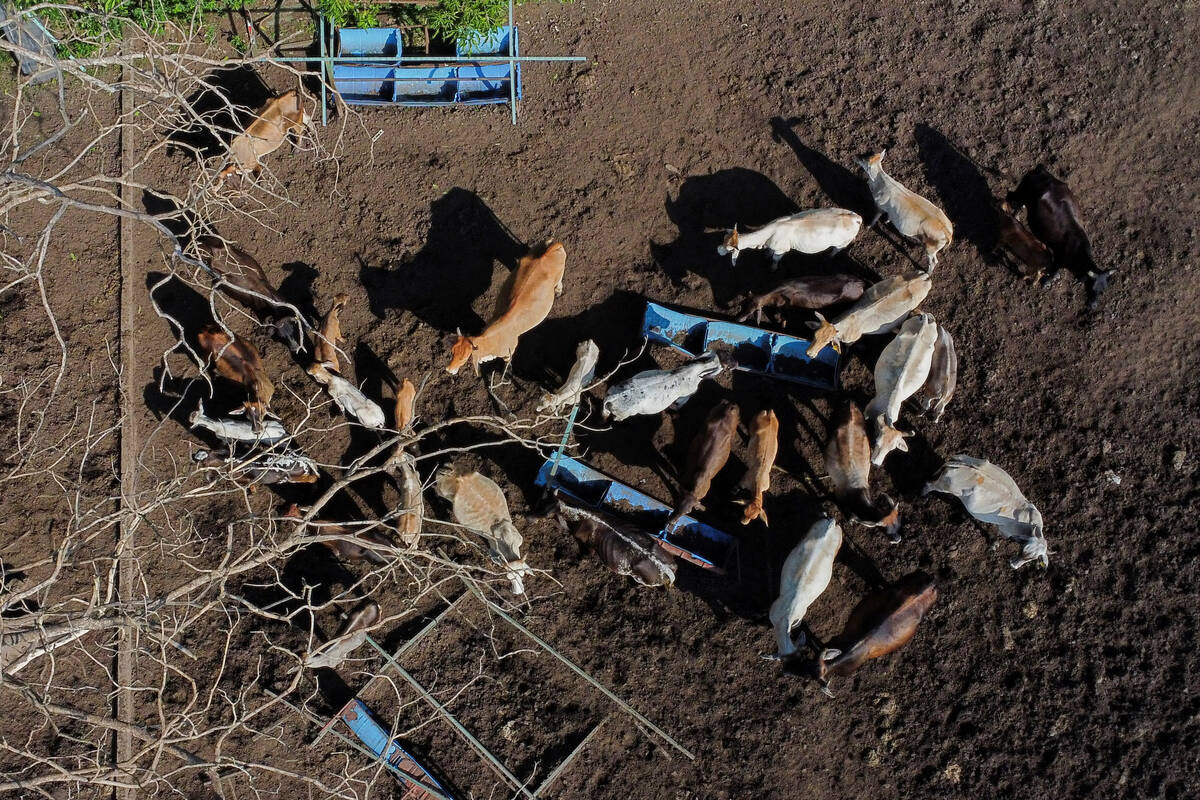As pesticide season approaches, producers should be giving some thought to their own safety, says Clark Brenzil, weed control specialist with Saskatchewan Agriculture.
“Protection from pesticides is often one of the first things to slip when the busy season is on, so producers should take time now to prepare supplies of safety equipment,” he said.
“While each new generation of pesticides is safer than the last, users still need to take adequate precautions to prevent unnecessary exposure.”
He said pesticides range in toxicity from acute – organophosphate insecticides, for example – to relatively benign, such as some herbicides.
Read Also

Cattle smuggling worsens outbreak in Mexico
Cattle being smuggled across Mexio’s southern border are making a screworm outbreak much more difficult to control.
“Although the acute toxicity of most herbicides is relatively low, safety equipment should still be worn because less is known about the long-term effects of exposure to these products.”
Not all equal
Brenzil said some pesticide formulations are absorbed by the skin more easily than others.
For example, oil-based products, such as emulsifiable concentrates and some oil-based flowables, are absorbed the quickest by the skin.
Water-based solutions and water-based flowables have lower potential for skin absorption, but not as low as dry products, such as water-soluble granules, wettable powders and soil-applied granules.
“The skin, furthermore, is the most common area of exposure to chemicals used in pesticide applications,” he said.
“Absorption of pesticides through the skin varies with the body part it covers. The scalp, ear canal and genital area have the highest uptake.”
Brenzil said hearing-protection devices may also help prevent pesticides from entering the ear. They should be washed thoroughly after each use.
Baseball caps should be thrown out after each round of spraying.
Coveralls should also be worn, preferably disposable ones because they are less permeable and are thrown out after use. The weave should be tight and there should be no holes.
A fresh pair should be worn each day, and they should be washed separately.
Goggles, facial protection and respirators that block organic vapors should be worn.
“Obvious areas of exposure are the hands and feet, as they have the most contact with our surroundings,” he said.
“Gloves and boots that are impermeable to chemicals are also the obvious solution.”
Boots should be of natural rubber or neoprene, and should completely cover the feet and legs to the knee.
Rubber or green nitrile gloves are important for both pesticide mixing and sprayer maintenance
Latex and vinyl gloves should not be used, as they are porous and degrade easily on exposure to many carriers and adjuvants.
Because large heavy gloves are often difficult to use when working with small parts of the sprayer, a set of heavy surgical nitrile gloves available at safety supply distributors can be used.
“Turning down the cuffs of gloves will help keep drips from running down arms when working on objects overhead or lifting containers up to the opening of sprayers.”
Wear clean clothing
Because the length of exposure to chemicals is as important as the intensity of the chemicals, clothing used during spraying should be removed when spraying is finished.
The applicator should shower immediately and change into clean clothes. Clothing on which pesticides are directly spilled should be changed immediately.
Organic materials such as cloth, leathers and canvas tend to absorb pesticides and then re-expose the owner each time they are worn
The cabs of application equipment should also receive attention.
Many have controlled ventilation with carbon filters, and these filters should be changed at the beginning of each spray season and replaced if chemicals can be smelled.
If such a contained system is used on spray equipment, protective clothing worn during mixing should be removed before entering. Otherwise, the system’s benefits are lost.














